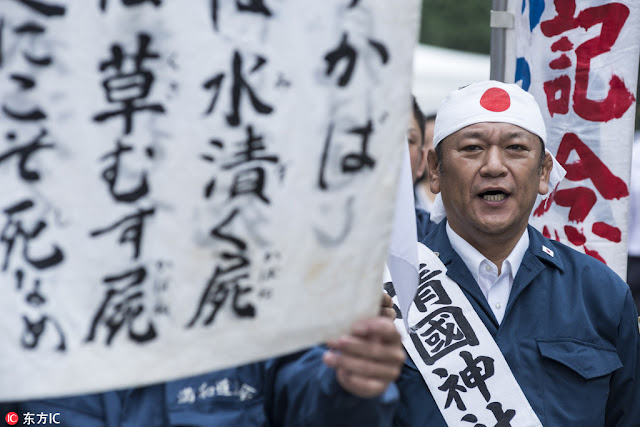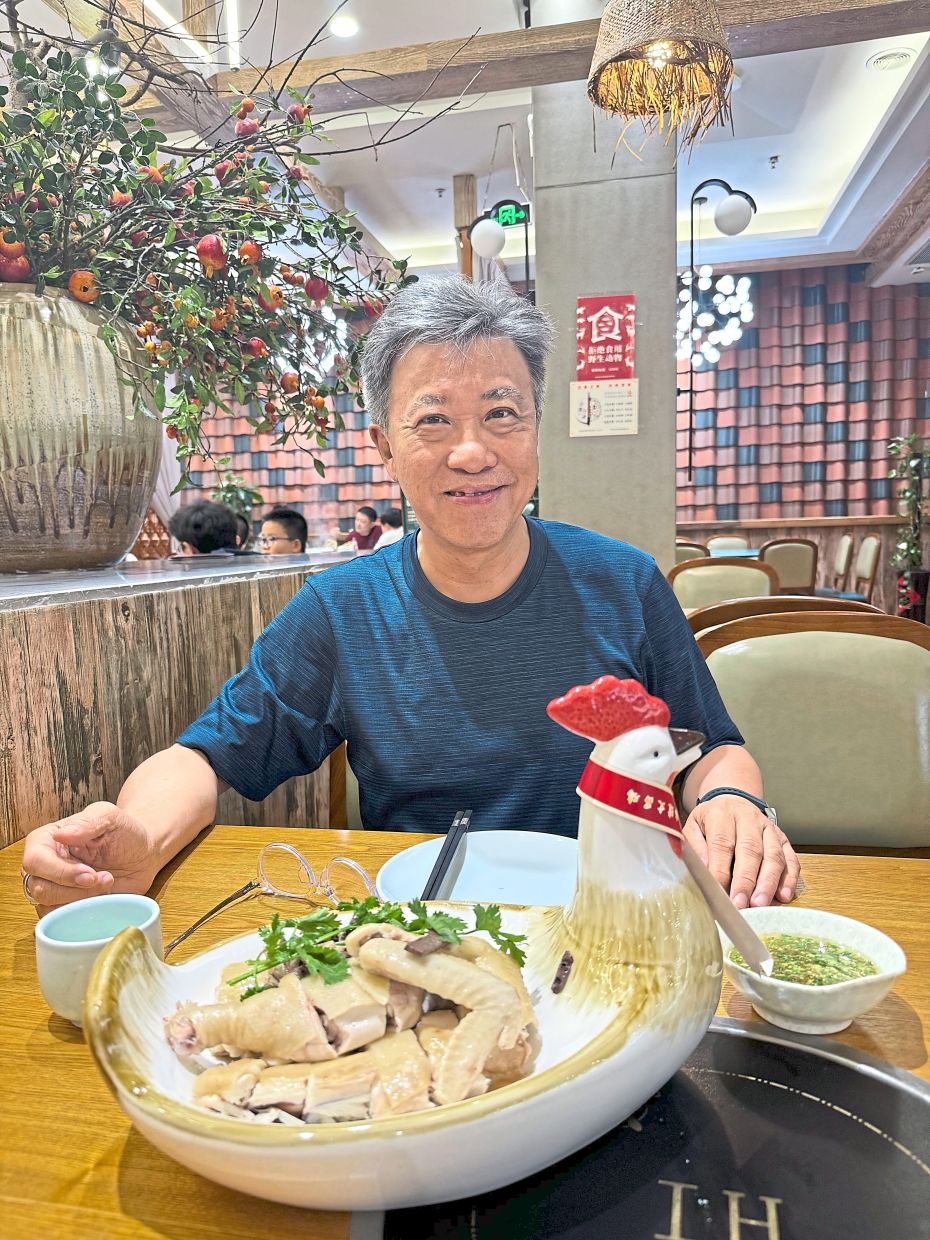The world’s highest bridge has opened to traffic in the country, state media said, capping an engineering feat three years in the making and snatching the record from another bridge in the same province.
The Huajiang Grand Canyon Bridge towers 625m above a river and vast gorge in the country’s rugged southern province of Guizhou, also home to the 565m Beipanjiang Bridge that is now the world’s second highest.
Live drone footage broadcast by state media yesterday showed vehicles traversing the immense structure, its blue support towers partially engulfed in clouds.
Crowds of onlookers including project engineers and local officials gathered on the bridge for a ceremony to mark the occasion, with several expressing their pride and excitement in live interviews to state media.
“The opening of the Huajiang Grand Canyon Bridge reduces travel time between the two sides from two hours to two minutes,” Zhang Yin, head of the provincial transport department, said at a press conference on Wednesday.
Its opening makes “enormous improvements to regional transportation conditions and (injects) new impetus into regional economic and social development,” she said.
China has invested heavily in major infrastructure projects in recent decades, a period of rapid economic growth and urbanisation in the country.
The hilly province of Guizhou in particular is crisscrossed by thousands of bridges – which now include the world’s two highest.
State news agency Xinhua said on Wednesday that nearly half of the world’s 100 highest bridges are located in the province.
The Huajiang Grand Canyon Bridge took more than three years to complete, Xinhua reported.
Its 1,420m main span makes it the “world’s largest-span bridge built in a mountainous area”, it added. — AFP
This bridge is a vivid projection of China’s new development philosophy
An aerial drone photo taken on Sept. 28, 2025 shows the Huajiang Grand Canyon Bridge in southwest China's Guizhou Province. Photo: Xinhua
Innovation is a pragmatic breakthrough driven by problems. Faced with complex terrain, geological and climatic conditions, the builders adopted an innovative "asymmetrical anchorage design," wind-resistance measures tested through physical wind tunnel experiments, and a fourth-generation "intelligent cable hoisting system." These efforts enabled new breakthroughs in complex bridge engineering, including millimeter-level precision docking of key steel structure joints at an altitude of more than 600 meters. Such innovation was not pursued for its own sake, but arose from the tireless efforts of China's engineers to address the pressing challenge of "turning natural barriers into thoroughfares." It is a concrete example of the principle of the "problem-oriented approach" in China's development philosophy and is a direct expression of the country's new quality productive forces. In this process, the spirit of perseverance embodied by Chinese engineers, akin to the story of "the foolish old man who moves mountains," was fully demonstrated. Through their actions, Chinese engineers have proved that "serving the people" is by no means an empty slogan.
Coordination is the key engine that activates regional development. Coordinated development is not about mere balance, but about achieving breakthroughs at key nodes to drive overall progress. The opening of the bridge has shortened the journey between Anshun and Liupanshui from two hours to just two minutes. What appears to be a simple shift in time and space is, in fact, a restructuring of the region's economic system.
While strengthening links between the region and its neighbors, the bridge also creatively integrates infrastructure with cultural tourism through a "bridge plus tourism" model. Projects such as a cloud-top café and a 625-meter bungee jump are incorporated into the bridge complex, linking with surrounding geological landscapes, ethnic minority traditions and red revolutionary sites to generate scale effects and open up new growth points. In due course, under the driving force of the bridge and the comprehensive economic system built around it, a new pattern of regional economic development is bound to emerge.
Green has become an integral element of development that is already embedded in our memory. In the ecologically sensitive karst landscape area, the builders creatively combined the canyon's rock formations with the bridge design, integrating the bridge structure with the canyon landscape. The entire construction process utilized "zero excavation" technology to minimize damage to the native vegetation. This steadfast commitment to the principle that "the ecological red line cannot be crossed" is a vivid manifestation of China's philosophy that "lucid waters and lush mountains are invaluable assets." The construction of the Huajiang Grand Canyon Bridge demonstrates that high-quality development can achieve a win-win situation for both economic and ecological benefits. This process of Chinese modernization reshapes the relationship between human activities and the ecological environment and represents an important contribution of China's green development philosophy to the world.
Openness and sharing represent the mutual learning of civilizations, allowing us to share and admire the beauty of each civilization. The bridge significantly enhances the efficiency of transit in southwest Guizhou, directly benefiting approximately 500,000 residents along the route. It connects essential resources for education, healthcare, and employment, embodying the principle of "shared development outcomes for all." China uses modern engineering technology to open up the "veins" of economic development and pave a "pathway to happiness" for the people. In this process, it also refines itself and engages with the world. The bridge's opening not only injects new momentum into domestic regional development but also provides a replicable and scalable model for the globe, contributing a "Chinese solution." This openness and sharing are not merely a simple transfer of technology; they encompass comprehensive collaboration and integration of design concepts, construction standards, and management experiences, reflecting a global vision of "building a community with a shared future for humanity" within the framework of shared development. As reported previously by the European website Modern Diplomacy: When the bridge is inaugurated, "it will not just be Guizhou or China celebrating, but the world witnessing a new milestone in civil engineering and technological innovation."
From the Zhaozhou Bridge and Luoyang Bridge, which embody the wisdom of ancient Chinese engineering, to the Beipanjiang Bridge, the Hong Kong-Zhuhai-Macao Bridge, and the Huajiang Grand Canyon Bridge, the history of Chinese bridges is a continuous story of breaking through limits and transcending boundaries. This bridge, which spans the canyon, not only establishes a "development corridor" between Anshun and Liupanshui but also conveys to the world in the most direct way that China's development has never been about surpassing others. Instead, it is about achieving a better version of itself, while providing more choices, better paths, and more beautiful visions for the common development of humanity in the process. - Global Times editorial



 Malaysian Prime Minister Anwar Ibrahim during a parade for Malaysian Independence Day celebrations last month in Putrajaya, Malaysia (Syaiful Redzuan/Anadolu via Getty Images
Malaysian Prime Minister Anwar Ibrahim during a parade for Malaysian Independence Day celebrations last month in Putrajaya, Malaysia (Syaiful Redzuan/Anadolu via Getty Images












